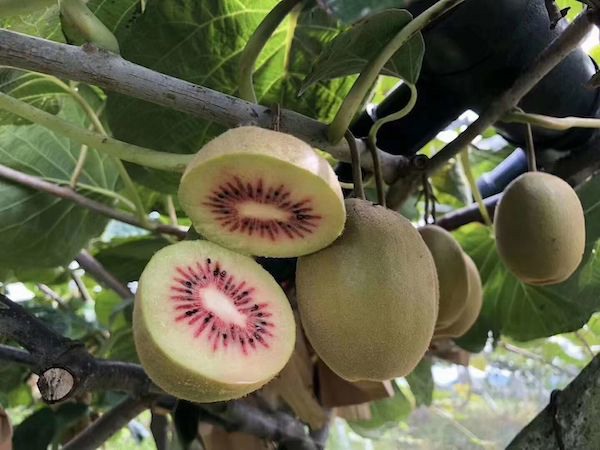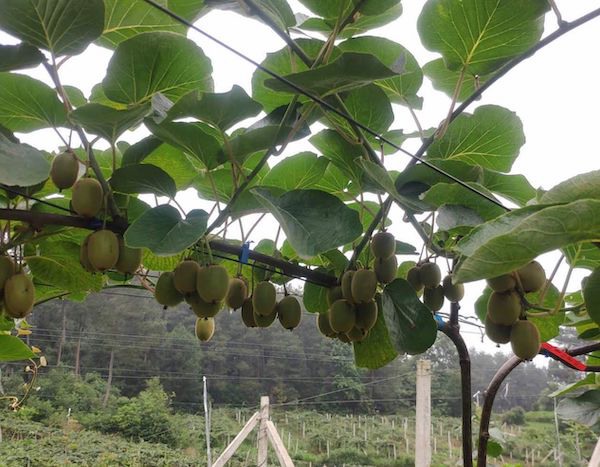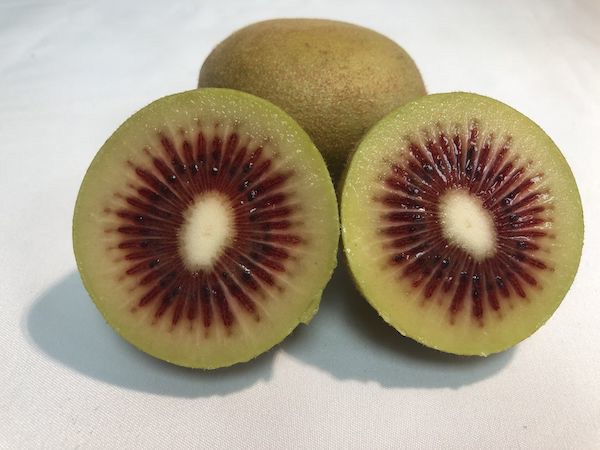Starting a production of red kiwis in France means waiting 6 years before the first harvest. Orchards of this new variety therefore struggle to see the light of day. However, a major player of the agrifood sector located in Châteaurenard (Bouches-du-Rhône) has an ecological solution that could adapt to several crops and help gain fruit and energy independence. A fair and highly relevant project. Sylvain Colleville, development and production manager for the Peruzzo group, reveals his analysis and solutions on the subject.

The Peruzzo group discovered the red kiwi during a trip 3 years ago. This new kiwi variety, rich in vitamin C and antioxidants, is very popular among consumers for its sweet red fruit taste. For three years now, the group has been developing its cultivation in France, with a plan to plant 10 hectares of red kiwis and 13 hectares of yellow kiwis in 2022, followed by 8 hectares of red kiwis and 4 of yellow kiwis in photovoltaic greenhouse in 2023. Peruzzo wants to offer to farmers and new producers a “turnkey” ecological project that would require very little investment, with the possibility to produce in agrivoltaic greenhouses or under photovoltaic shades. But the solution struggles to see the light of day.
“We have discovered this fruit with an exceptional flavor and we want to develop its production in France, but we are confronted with the regulations in force, which slow down considerably the ‘turnkey’ process we want to offer to the producers. For the red and the yellow kiwis, it takes at least two years to obtain a permit to build a greenhouse, with no guarantee that it will be obtained, and then another four years until the first harvest, so a total of at least six years during which the land cannot be used and there is no income. This is not encouraging for the producers. The Local Urbanism Plans and Relocation Pilot Project Policies are also causing some delays. In the current context, it is more relevant to focus on our independence in terms of energy. The European deputies are discussing it, but what is happening in the field? We are faced with major difficulties to implement these projects. We have received calls from about 50 producers who want to plant red and yellow kiwis and so far, only two projects have been completed. The delays have scared off the other producers,” explains Sylvain Colleville.

While investment costs for the structures have increased by 40% for fruit growers, along with the costs of phytosanitary products to protect the fruit from weather hazards, agrivoltaic solutions could be the answer to both problems; an advantageous solution for both agriculture and the development of green energy.
For agriculture, photovoltaic greenhouses or shades allow for:
- The implantation of new varieties of fruit in France (red kiwi, avocado…)
- Robust protection against the rain, frost, hail and wind, as well as a serene production for the most fragile fruit;
- A reduction of the use of inputs;
- The possibility to harvest even on rainy days (cherries, apricots…);
- Easy staking or trellising;
- Structure and planting costs financed partly or entirely by the sale of electricity.
For the development of green energy, there are also multiple advantages:
- KWH production cost lower than the cost of other energies (nuclear, gas, coal)
- Renewable and non-polluting energy
- Easy connection to the network

The photovoltaic installations would help develop new fruit crops in France that would be sustainable and profitable for the producers, while taking advantage of farmland to produce a lot of green energy. In the current context, not considering these solutions seems irresponsible to me. The procedures to obtain building permits and hail protection nets must be simplified. I would like us to come up with a solution so as not to lose these two years and I want to present this solution to French Minister of Agriculture Julien Denormandie,” explains Sylvain Colleville.
Contrary to yellow kiwis, red kiwis are highly sensitive to bacteriosis and must be protected from the rain, which makes their production in photovoltaic greenhouses all the more interesting.
For more information:
Peruzzo
https://www.peruzzo-group.com
